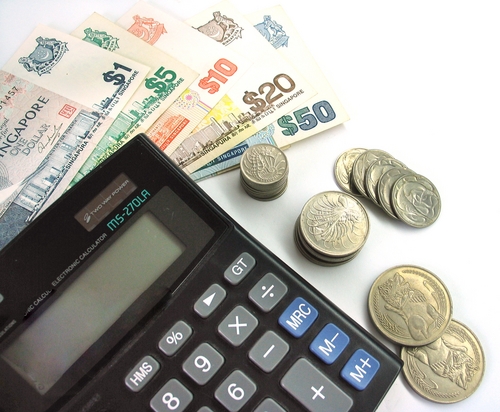
Singapore struggles with stagflation
Singapore will be home to the weakest growth and one of the highest inflation rates in Southeast Asia, says DBS Group Research.
DBS Group Research noted:
Final GDP figures for 2Q12 will be on tap this Friday morning. As the nation is due to celebrate its 47th birthday, the good news is that the earlier prediction (official advance estimates) of a 1.1% QoQ saar contraction in GDP is likely to be revised upwards to a modest 0.4% expansion. That should translate into a 2.2% YoY expansion.
Plainly, it was the pharmaceutical industry that saved the day. Singapore has narrowly averted a contraction, much thanks to a timely boost from the drug sector. Production output in the segment surged 45% MoM sa (69% YoY) in June after a solid 20% expansion in May. This has helped to bump up the overall manufacturing growth for the quarter to 4.5% YoY, from the earlier estimate of 3.0%.
That by itself will add an additional 0.3%-pt to the previous 1.9% projection in the headline growth figure. It's certainly a much needed jab in the arm for the economy, especially when production output in the electronics segment has been deeply impacted by the external slump.
Indeed, weak external demand on account of the economic turmoil in the Eurozone and the fading growth momentum in the US continues to weigh on the growth pace of the economy. This effect is likely to be manifested in those externally driven services industries as well. Though sectors such as the retail and tourism related services have remained fairly resilient, growth momentum in sectors such as wholesale trade, transportation services and financial services are moderating.
Moreover, the tightening measures on foreign labour probably have suppressed growth momentum in some of those foreign labour-intensive industries. This is likely to be reflected in the poor performance by the construction sector. In addition, developers may be slowing down the pace of construction amid a gradual cooling down in the property market.
Despite the upward revision to the headline number, this is undeniably a pullback in growth compared to a 9.4% QoQ saar expansion in the first quarter. Going forward, the global economy is seen heading into choppy waters, which will have significant implications on the growth outlook for the Singapore economy.
Growth momentum is likely to be slower than previously anticipated and as a result, we have recently revised our growth forecast for the year down to 3.0%, from our previous forecast of 3.5%. This year is proving to be a difficult year for the economy and a tricky one for policy makers. In contrast to past years, Singapore will be home to the weakest growth and one of the highest inflation rates in Southeast Asia.
More specifically, Singapore is struggling with stagflation. Against this background, there is scope for the MAS to shift to a more accommodative monetary stance when it meets in October. As the US continues to slow and the EU crisis remains anything but resolved, the odds of such action are on the rise.
























 Advertise
Advertise






